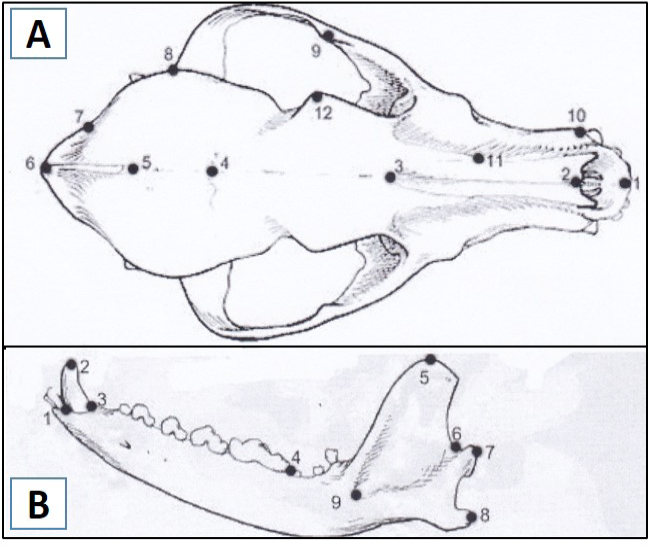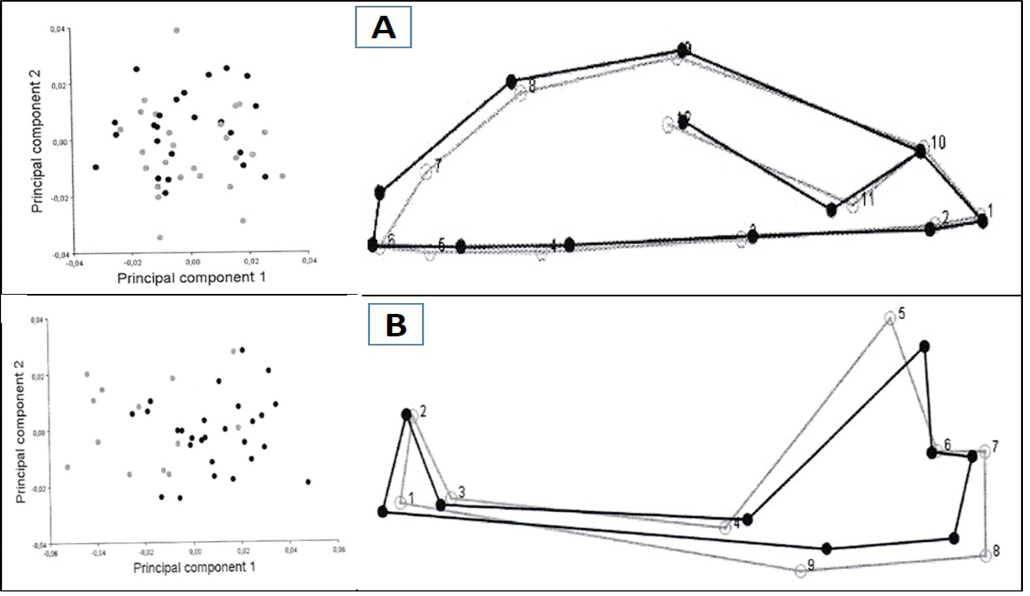Dimorphism in the Skull Form of Golden Jackals (Canis aureus Linnaeus, 1758) in the Western Balkans: A Geometric Morphometric Approach
Dimorphism in the Skull Form of Golden Jackals (Canis aureus Linnaeus, 1758) in the Western Balkans: A Geometric Morphometric Approach
Andrea Rezic1, Ivica Boskovic2, Piera Lubinu3, Marina Piria1, Tihomir Florijancic2, Massimo Scandura3 and Nikica Sprem1*
Landmarks recorded on the dorsal side of the skull and on the lateral side of the mandible (for anatomical definitions, see Table I).
Scatter plots of the first two principal components (PC1 and PC2) of the specimens separated by sex. A, Skulls in dorsal view; B, Lateral view of mandibles. Symbols: black circles, females; grey circles, males.
Cross-validated discriminant analysis of the skull and mandible of golden jackals. Histograms show the values of the cross-validation scores. Wireframe deformations are used to demonstrate shape changes. A, Skulls in dorsal view; B, Lateral view of mandibles. Symbols: dark grey bars, females; light grey bars, males.












